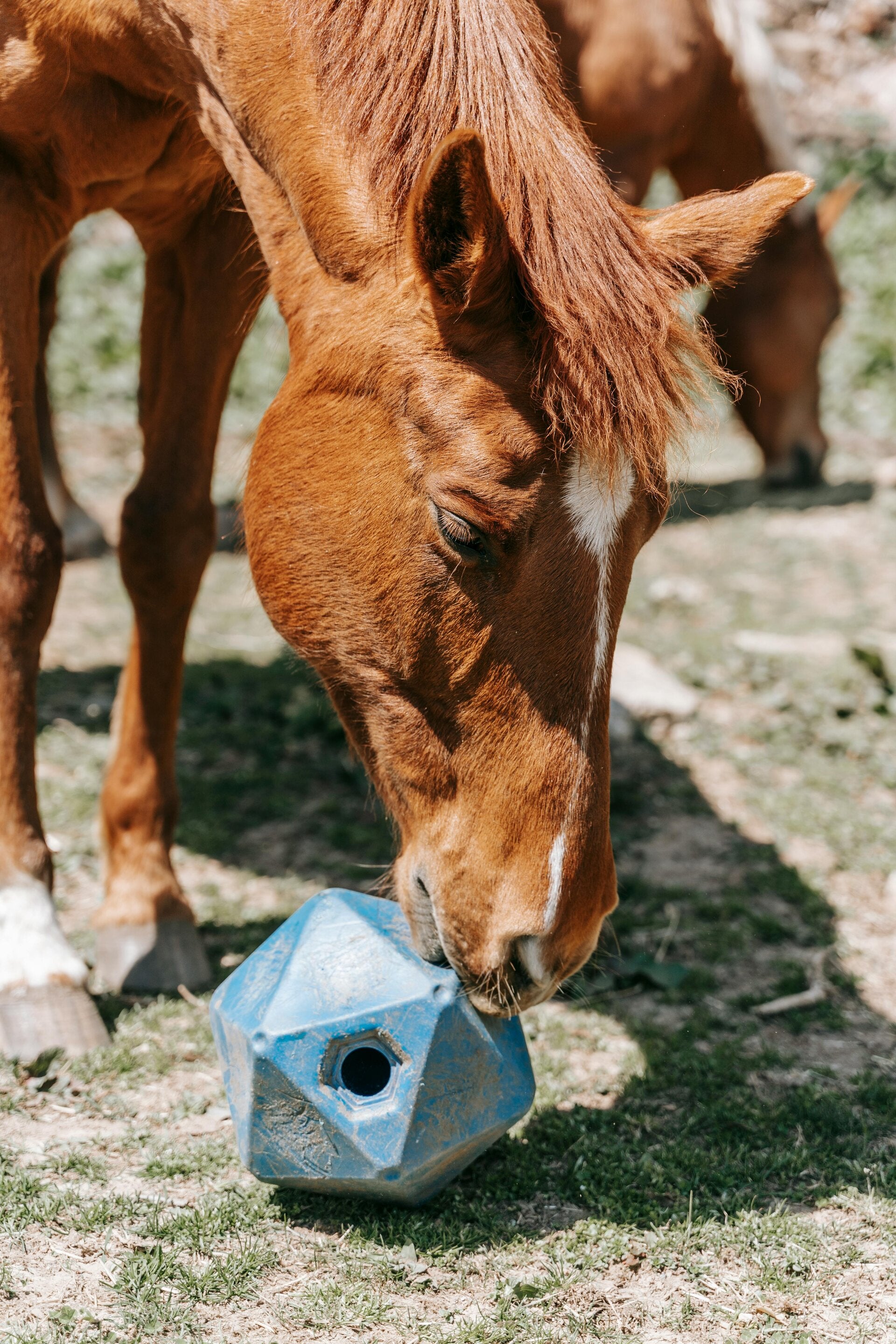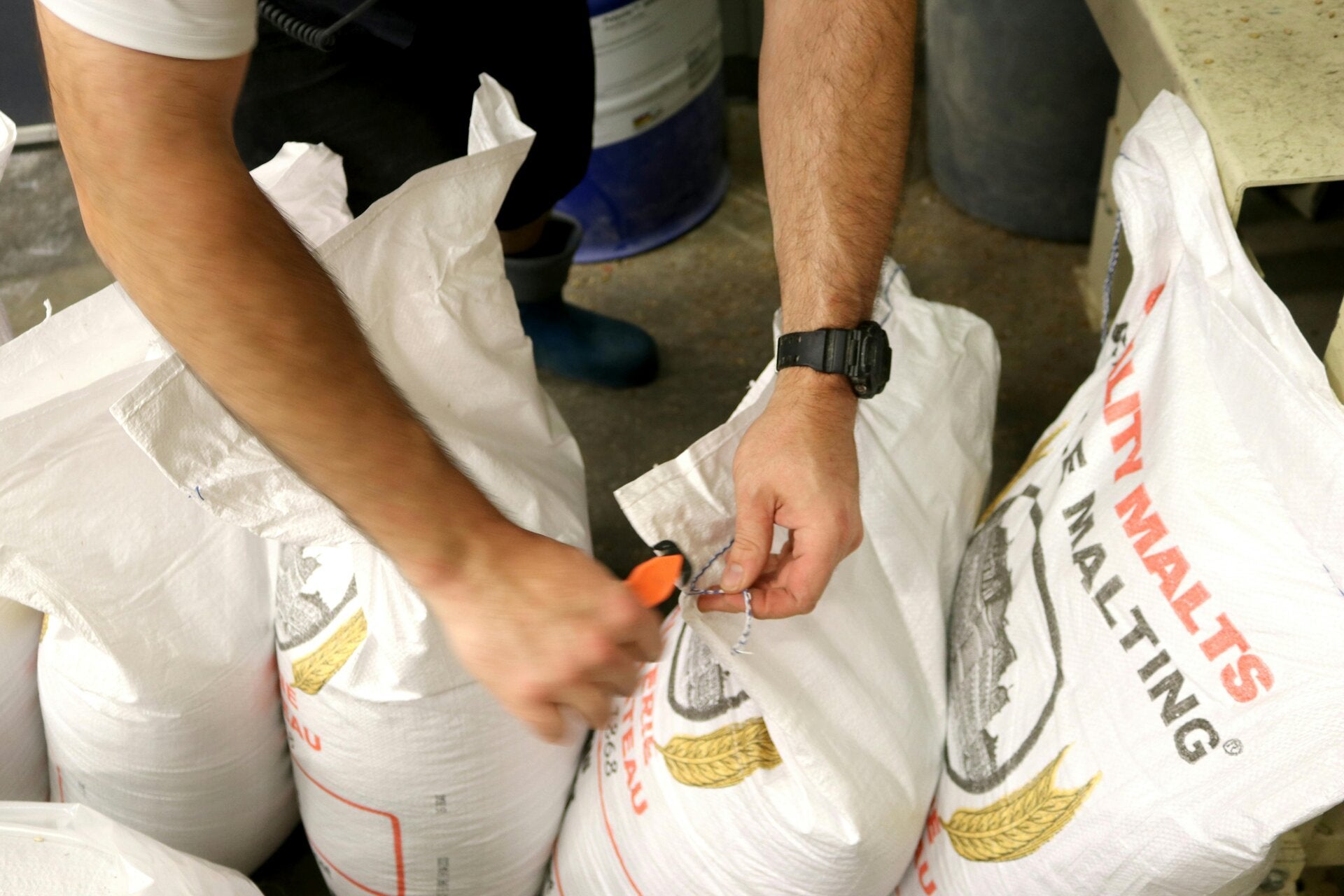GMO cereals refer to genetically modified cereals which have had their DNA modified using genetic engineering methods, incorporating pesticides and herbicides into the structure like the "RoundUP Ready" soybean complete with it's own glyphosate. Soya oil is widely used in animal feed and is thought healthy as it is high in Antioxyants, but unless it is stated as organic it is probably the GMO version, personally, I have no wish to feed glyphosate to my horses.
No Added Molasses
Back in the olden days we tipped molasses onto the bran mash to make it lovely and treacly! Of course horses, like people, are not meant to eat that quantity of sweetness, but they, like us, love that sugar hit. Feed companies have cottoned on to the fact that many owners are aware too much sugar is bad for their horses, so they put on the bag, "Molasses Free" but when you put your hand in the mix it still feels sticky, they have made a glucose based syrup which is useful to bind any dust in the feed and masks inferior quality ingredients. Always look on the bag (maybe on the little sewn on label) to see the amount of sugar in the feed. For horses that have EMS (Equine Metabolic Syndrome) the combined sugar and starch (NSC) should be below 10%
Are there "Bad" oils?
We are told that Oil is a great source of protein and fat for our horses, indeed some oils are, flax or linseed oil is very high in alpha-linolenic acid (ALA) a plant based omega 3 fatty acid and lignans, this basically means that Flaxseeds are nutrient dense and contain approximately 40% fat, 30% fibre and 30% protein, they are also high in the B complex vitamins and vitamin A and E. Flaxseeds are better fed ground or extruded as in the oil form it is unstable and can quickly become rancid at moderate to high temperatures. Flax provides support with weight maintenance or weight gain in underweight horses, is high in energy, but low in carbohydrates, its high fat content is efficiently digested and absorbed in the small intestine and is a good balancer for Omega 6 which is often too high in commercial feeds.
Soya oil, which is highly used in commercial mixes and pellets is ok if it is non GMO, BUT it is the most highly genetically modified of all crops and studies are showing a link between Equine Metabolic Syndrome and glyphosate, used in GM soya, Equine Osteopath Tom Mayes is finding "when the liver is overwhelmed with glyphosate and the normal array of toxins in the standard diet, diaphragm spasms, inflamed brain and systemic inflammation will follow, leading to auto immune issues"
Is Lucerne (Alfalfa) good or bad?
Lucerne is widely fed around the world for horses, it is neither inherently good or bad, its suitability depends entirely on the animal concerned. It is high in protein approx 18% low in sugar and starch rich in amino acids and high in calcium, so suitable for youngstock, those needing weight gain or sports horses. Lucerne is predominantly used as the fibre in a mix or pellet here in France, this is fine for most horses but some horses can be allergic to it, it can cause excessive weight gain in easy keepers and although often recommended for horses with Equine Gastric Ulcer Syndrome (EGUS) I have found that it more often irritates the transit than helps it.
Why shouldn't my horse eat grain?
Horses do not have digestive systems designed to cope with large quantities of grain (cereals) feeding them in excess can easily overwhelm the system due to the high starch content of oats, barley and maize, the small intestine cannot break down all the starch, thus the residue of undigested starch goes into the large intestine where it is fermented by microbes leading to an over production of lactic acid, which at best results in gas at worst in ulcers and colic.
Grain has an inverted calcium to phosphorus ratio, this is an imbalance and can lead to deficiencies in calcium absorption, potentially causing skeletal problems in youngstock, orthopaedic issues and tying up.
Research is showing that high grain diets can negatively effect the horses welfare, cause insulin spikes, metabolic disorders, Cushings, leaky gut without providing any benefits for muscle development.
For horses in HARD work a small amount of grain (particularly oats) can be beneficial to provide additional energy as long as they are balanced with appropriate supplements to address their nutritional deficiencies. The majority of horses do not need grain in their diet.
What is Nutritionally Improved Fibre?
I always urge clients to read the label on the sack, not just look at the "Name" often seen in the ingredient of "Nutritionally Improved Fibre" what on earth is this? Fibre with added nutrition? Fibre with added vitamins and minerals? No, it is cheap fibre, like straw, that has been chemically treated, often sulphuric acid, to break down the lignin and cellulose (woody matter) to make the fibre easier to chew and digest, this is obviously detrimental to the horse. Good quality oat straw can be fed to horses in limited quantities and mixed with hay, chopped into a chaff is even better.
What is Wheat or Oat feed?
Another common ingredient found in mixes and pellets is wheat or oat feed, this became a popular and cheap addition to ruminant diets and is not appropriate for horses. It is the by product of ground or processed cereal grains, mainly the husk, which is ground down further and used as an inexpensive binder for commercially produced horse feed. The disadvantages of cereal grain are set out above, but in addition the husk will contain much of the nitrates from fertilisation and chemicals from sprays.
Why is iron so bad?
Of course, Iron is not bad! The problem we have in the whole of the UK and most of Europe is that the Iron levels in our soils are ridiculously high, therefore as excess Iron is a thought to contribute to laminitis (due to elevated ferritin levels found in horses with high insulin levels). In addition to this excess iron is believed to lead to deficiencies in copper and zinc, crucial for hoof tendon and ligament health. So basically at best the added iron is causing an imbalance in mineral uptake at worse it is doing actual damage to our horses well being. Many feed companies add iron to their mixes and pellets and even their forage balancers (CMV) which is unnecessary and potentially harmful.
Why does my horse need a Vitamin and Mineral Balancer?
Even if your horse or pony is on a hay only diet and does no work at all it still needs an additional forage balancer or CMV as we call it in France. If you have had your soil or hay analysed you will see that the results do not provide a balanced source of vitamins and minerals, this can lead to many problems ranging from poor skin, coat and hoof condition to digestive, locomotive and metabolic disorders. Most horses in no or light work do not need a mix or pelleted feed, but they do need a mineral vitamin forage balancer with no added iron. Look carefully on the nutrients listed as many seem a broad range, but they are in such small quantities as to be of little use, also calculate the amount needed, for instance a bag sold for say 50€ may need to be fed at 500g per day, making it more expensive than a bag at twice the price fed at 100g per day. Look for high levels of magnesium, Vitamin E, Selenium, Copper and Zinc, these are often inadequate as they are more expensive. If you feed a mix or pellet that has vitamins and minerals added, ensure you are feeding the correct amount, if you are feeding under the RDA then your horse will need added supplementation of Vitamins and Minerals.


